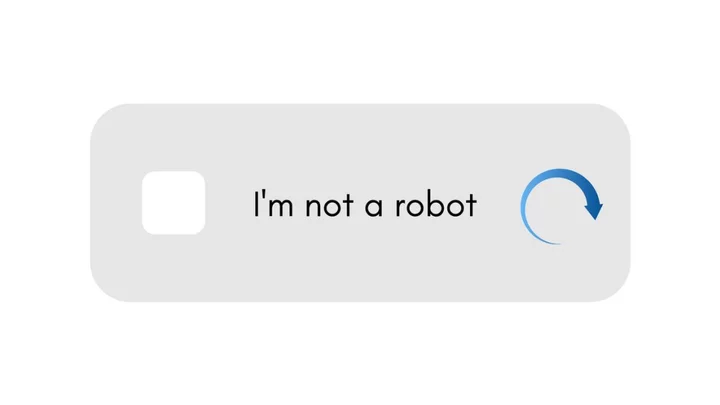
Captcha is now asking users to identify objects that don't exist
Captcha is trying to get people using Discord a to identify objects that do not exist. As reported by Vice, multiple people using the platform are being shown a “Yoko,” which looks like a mix between a snail and a yoyo, and has been generated by AI, or other AI generated images like puzzle cubes. Meanwhile, two months ago, a Redditor noticed Discord was asking it to distinguish AI generated soccer players amidst a group of pictures of people playing hockey and golf. Sign up to our free Indy100 weekly newsletter Others have complained that images being generated are just 'awful.' Discord’s captchas are run by a company called hCaptcha. “The technology that generates these prompts is proprietary to our third-party partner and Discord does not directly determine what is presented to users,” Discord told Motherboard. “While most hCaptcha interactions do not result in a visual challenge, many variants are used at any given time. “This particular question was a brief test seen by a small number of people, but the sheer scale of hCaptcha (hundreds of millions of users) means that when even a few folks are surprised by a challenge this often produces some tweets.” Have your say in our news democracy. Click the upvote icon at the top of the page to help raise this article through the indy100 rankings.
1970-01-01 08:00
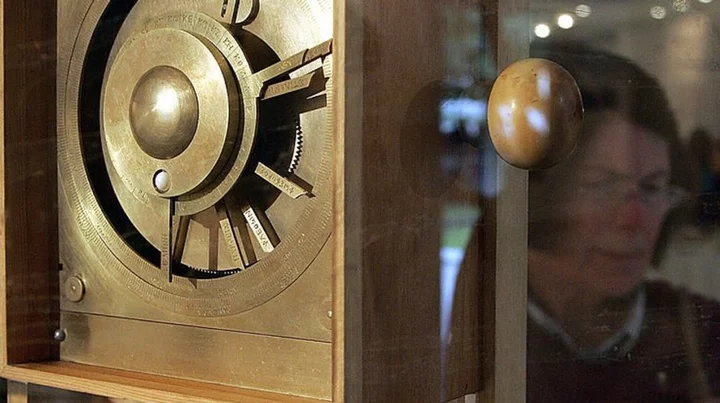
Discovery of '2000-year-old computer' leaves scientists baffled
Scientists have been left baffled by the discovery of the wreck of a 2,000-year-old “computer” that is amazingly complex. The Antikythera mechanism – an astronomical calendar – has been dubbed “‘the first computer” and has baffled scientists for generations after it was first discovered inside a Greek shipwreck in 1901. The device is a hand-powered time-keeping instrument that used a wing-up system to track the sun, moon and planets’ celestial time. It also worked as a calendar, tracking the phases of the Moon and the timing of eclipses. Despite sounding relatively simple, the mechanism was actually ahead of its time, being more technically sophisticated than any other tool that was invented over the next 1,000 years. In its current condition, the mechanism is in 82 separate fragments with only a third of its original structure remaining, including 30 corroded bronze gearwheels. Sign up to our free Indy100 weekly newsletter Research into the device from experts at University College London involved 3D computer modelling and helped them solve the mystery of how the device worked, revealing a “creation of genius”. Adam Wojcik, a materials scientist at UCL said at the time: “We believe that our reconstruction fits all the evidence that scientists have gleaned from the extant remains to date.” They theorised that the device tracked the movement of the sun, moon and planets on concentric rings, as the ancient Greeks believed that the sun and planets revolved around Earth, rather than the sun. The researchers explained in Scientific Reports: “Solving this complex 3D puzzle reveals a creation of genius—combining cycles from Babylonian astronomy, mathematics from Plato’s Academy and ancient Greek astronomical theories.” Have your say in our news democracy. Click the upvote icon at the top of the page to help raise this article through the indy100 rankings.
1970-01-01 08:00

Man suffers 'triple penis fracture after hearing a 'snap' during sex
One unlucky guy lived out every man’s worst nightmare recently, after suffering a “triple penis fracture”. A man from Tanzania was hospitalised after hearing his penis “snap” during sex. Details of the grisly injury were recorded in the International Journal of Surgery Case Reports. The “snap” happened “when the penis slipped out, lost the way” and struck his female partner “as he was trying to reinsert it”. It’s enough to make anyone wince, and the extent of his injury was revealed after he took himself to hospital. Sign up to our free Indy100 weekly newsletter Doctors took a look and found the penis to be severely swollen and covered in blood. They diagnosed him with having a “fractured” penis, which refers to a rupture in the fibrous connective tissue, called the tunica albuginea. Not only that, but an MRI scan also showed that there were three clear points of injury along the tunica albugine, with the main “fractures” in the erectile tissues known as the corpora cavernosa and the corpus spongiosum. The man was taken into surgery before being discharged three days later. He also had a catheter fitted in his urethra which was removed after three weeks. “He was seen at the clinic six months post-operative where he reported having resumed his sexual life with no any difficulties and the penile shaft looked OK,” his doctors said in the report. It sounds like all kinds of pain, and it’s an injury that is becoming more and more common. The NHS revealed stats in 2020 that showed 38 percent rise in such injuries from 2014 to 2020. Doctors speculated at the time that it could be down to pornography viewing habits leading to more couples trying unusual sexual positions, as well as an increase in the use of Viagra. Have your say in our news democracy. Click the upvote icon at the top of the page to help raise this article through the indy100 rankings.
1970-01-01 08:00
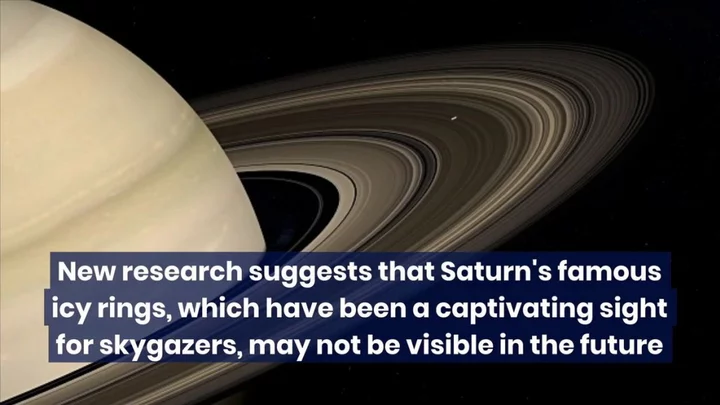
Saturn’s iconic rings are disappearing
Saturn’s rings might disappear pretty soon astronomically speaking, according to new research. A new analysis of data captured by NASA’s Cassini mission, which orbited the planet between 2004 and 2017, has revealed new insights into when the seven rings were formed and how long they might last. During Cassini’s Grand Finale, when the spacecraft completed 22 orbits in which it passed between Saturn and its rings, the researchers observed that the rings were losing many tons of mass per second, which means the rings will only be around another few hundred million years at most. “We have shown that massive rings like Saturn’s do not last long,” said Paul Estrada, research scientist at NASA’s Ames Research Center in Mountain View, California, and a coauthor of the studies, in a statement. “One can speculate that the relatively puny rings around the other ice and gas giants in our solar system are leftover remnants of rings that were once massive like Saturn’s. Maybe some time in the not-so-distant future, astronomically speaking, after Saturn’s rings are ground down, they will look more like the sparse rings of Uranus.” Sign up to our free Indy100 weekly newsletter Saturn’s rings are made mostly of ice but have a small amount of rocky dust created by broken asteroid fragments and micrometeoroids colliding with the rings. The research also found that the rings appeared long after Saturn’s initial formation, and were still forming when dinosaurs roamed the Earth. “Our inescapable conclusion is that Saturn’s rings must be relatively young by astronomical standards, just a few hundred million years old,” said Richard Durisen, professor emeritus of astronomy at Indiana University Bloomington and lead author of the studies in a statement. “If you look at Saturn’s satellite system, there are other hints that something dramatic happened there in the last few hundred million years. If Saturn’s rings are not as old as the planet, that means something happened in order to form their incredible structure, and that is very exciting to study.” Have your say in our news democracy. Click the upvote icon at the top of the page to help raise this article through the indy100 rankings.
1970-01-01 08:00
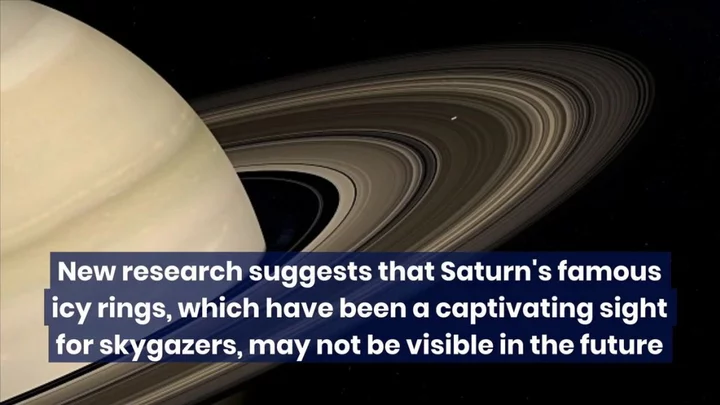
Saturn’s rings are disappearing and could be gone relatively soon
Saturn’s rings might disappear pretty soon astronomically speaking, according to new research. A new analysis of data captured by NASA’s Cassini mission, which orbited the planet between 2004 and 2017, has revealed new insights into when the seven rings were formed and how long they might last. During Cassini’s Grand Finale, when the spacecraft completed 22 orbits in which it passed between Saturn and its rings, the researchers observed that the rings were losing many tons of mass per second, which means the rings will only be around another few hundred million years at most. “We have shown that massive rings like Saturn’s do not last long,” said Paul Estrada, research scientist at NASA’s Ames Research Center in Mountain View, California, and a coauthor of the studies, in a statement. “One can speculate that the relatively puny rings around the other ice and gas giants in our solar system are leftover remnants of rings that were once massive like Saturn’s. Maybe some time in the not-so-distant future, astronomically speaking, after Saturn’s rings are ground down, they will look more like the sparse rings of Uranus.” Sign up to our free Indy100 weekly newsletter Saturn’s rings are made mostly of ice but have a small amount of rocky dust created by broken asteroid fragments and micrometeoroids colliding with the rings. The research also found that the rings appeared long after Saturn’s initial formation, and were still forming when dinosaurs roamed the Earth. “Our inescapable conclusion is that Saturn’s rings must be relatively young by astronomical standards, just a few hundred million years old,” said Richard Durisen, professor emeritus of astronomy at Indiana University Bloomington and lead author of the studies in a statement. “If you look at Saturn’s satellite system, there are other hints that something dramatic happened there in the last few hundred million years. If Saturn’s rings are not as old as the planet, that means something happened in order to form their incredible structure, and that is very exciting to study.” Have your say in our news democracy. Click the upvote icon at the top of the page to help raise this article through the indy100 rankings.
1970-01-01 08:00
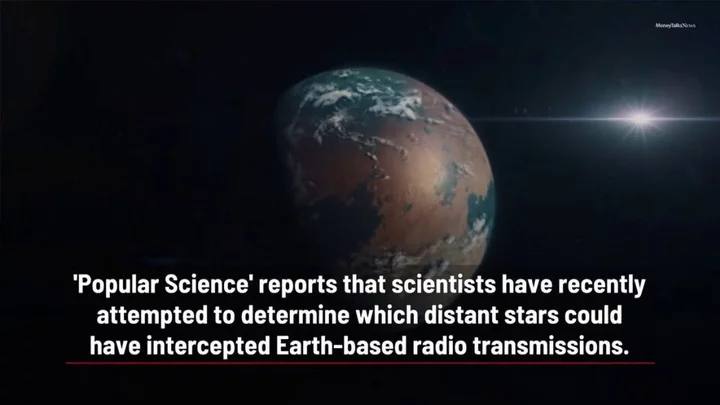
Earth has received its first ever 'alien message'
Earth has received the first ever ‘alien message’ after a simulation of what extraterrestrial contact could look like was sent out by scientists. The SETI Institute produced the simulation of a radio wave from a Mars orbiter and gave hint of how alien contact would be received. The exercise was conducted to prepare experts for the “profoundly transformational experience for all humankind”. The signal was successfully decoded after taking just 16 minutes to travel through space and be picked up by telescopes on Earth. Sign up to our free Indy100 weekly newsletter It all took place as part of the A Sign in Space project led by Daniela dePaulis, who said during the live-streamed event: “It was very real. This is not the first time we have received a signal from TGO [ExoMars Trace Gas Orbiter], but this one is a real message.” The signal had to be decoded, as it couldn’t be heard on Earth without being altered. Victoria Catlett is the GBO software engineer and she explained: “A radio signal is not inherently sound, but a light wave. “When we receive it with something like a car radio, that light wave gets translated into the up and down movement in the speaker - and that is what you hear.” Of course, there’s no evidence that aliens exist at this point, but it’s good to know that we’re prepared. It comes after it was revealed that aliens could be mapping out the planet via the signals mobiles are emitting. It’s all to do with the radio transmission towers which are key to millions of people communicating around the world. These towers are constantly pumping out microwave signals as we call and message one another, and they’re found across a huge area of the Earth’s surface. Have your say in our news democracy. Click the upvote icon at the top of the page to help raise this article through the indy100 rankings.
1970-01-01 08:00
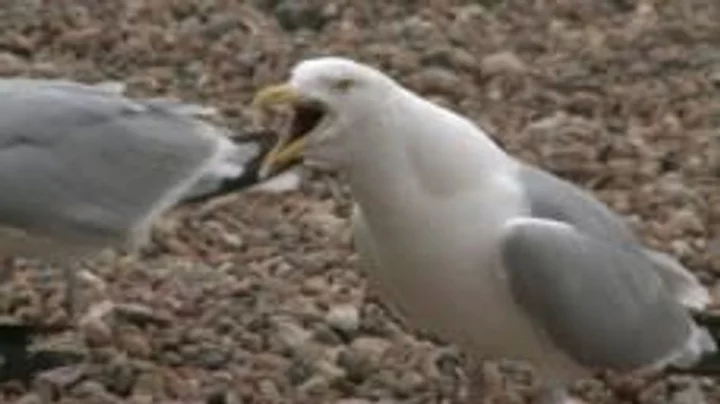
Scientists discover why gulls always prey on people's food
Anyone who has braved a stroll along England's coastline will be aware of seagulls' tyrannical regime. They prey on people eating chips, they swoop down on unsuspecting holidaymakers licking an ice cream, and they can be quite aggressive indeed. And now, terrifying research has revealed that they are more calculating than you may have previously thought. A University of Sussex study on herring gulls at Brighton beach found that the birds choose what to eat by watching what humans are enjoying. Scientists taped green (salt and vinegar) and blue (cheese and onion) packets of Walkers crisps to tiles and placed them a few metres from gulls on Brighton beach and filmed the birds’ behaviour from a distance. In some cases, the researchers ate from one of the bags of crisps. When the scientists didn't eat, less than a fifth of gulls approached the crisp packets placed nearby. But when the researchers were snacking on crisps, 48 per cent of the birds came to check out the packets. Nearly 40 per cent of such approaches ended with gulls pecking at the crisp packets, and of these, 95 per cent were directed at the same colour packet as the scientist was eating from. Sign up to our free Indy100 weekly newsletter “We’ve shown that adult gulls are able to pay attention to the behaviour of humans and apply that to their own foraging choices,” said Franziska Feist, a biologist and first author on the study. “Given that the urbanisation of gulls is very recent, this ability must come from the gulls’ general smartness and behavioural flexibility.” “It is likely that simply deterring the public from directly feeding gulls may not be enough,” Feist said. “They are still able to observe what we eat and that would inform their ability to target waste, litter and so on.” Dr Madeleine Goumas, an expert on herring gulls at Exeter University who was not involved in the study, said: “We already know from previous research that gulls use information from people when they’re searching for food. “This study shows that we aren’t only drawing gulls’ attention to where food is, but they also learn about the type of food we’re eating. Knowing this may have implications for how we reduce negative interactions between humans and gulls, as we seem to be inadvertently teaching gulls to exploit new food items.” Meanwhile, past alarming research revealed that gulls prefer food that has been touched by people. Overall, it's giving Alfred Hitchcock's The Birds. Have your say in our news democracy. Click the upvote icon at the top of the page to help raise this article through the indy100 rankings.
1970-01-01 08:00
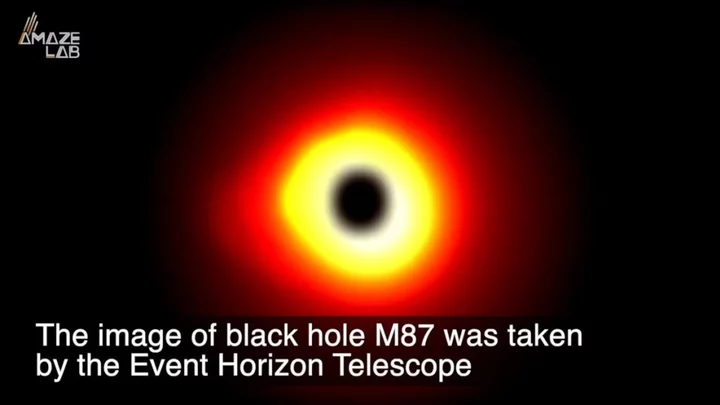
Black holes could contain 'hidden spacetime structures'
Black holes are the most confusing things out there in the universe and no-one really knows what they are – at least, that’s our very basic grasp of it. Now, though, a new study has posited a theory that black holes are structures created by unseen cosmic dimensions - or topological stars. And just to make it a little more confusing, these topological stars exist purely in the hypothetical realms of mathematics. Researchers at Johns Hopkins University have been exploring string theory, which posits that particles in the universe are actually tied to extra (hidden) dimensions through vibrating strings. Sign up to our free Indy100 weekly newsletter According to their findings, hypothetical topological stars could exist for real in the universe and they’re essentially formations of nothing which could appear in space. The study finds that topological stars would appear “remarkably similar to black holes in apparent size and scattering properties, while being smooth and horizonless”. The study, which was published in Physical Review D, found that these stars which until now have only existed in hypothetical form, look an awful lot like the black holes out in the universe. “String theory is a theory that reconciles quantum physics and gravity into a quantum gravity theory,” study leader Pierre Heidmann said. Speaking to Motherboard, he said: “Usually when you have a new theory like that, you have new degrees of freedom that come with it, and you can try to see what new fundamental objects can arise from that.” Co-author of the study Ibrahima Bah added: “It’s an interesting question to ask: Are there things other than a black hole [that] will give you a hint about what new physics could look like?” “But before you get there, you need to know how to tell whether you have a black hole or not, and to do that you have some prototype examples of things that are not black holes to be able to compare." As ever, black holes remain the most mysterious, and the most fascinating things out there. Have your say in our news democracy. Click the upvote icon at the top of the page to help raise this article through the indy100 rankings.
1970-01-01 08:00
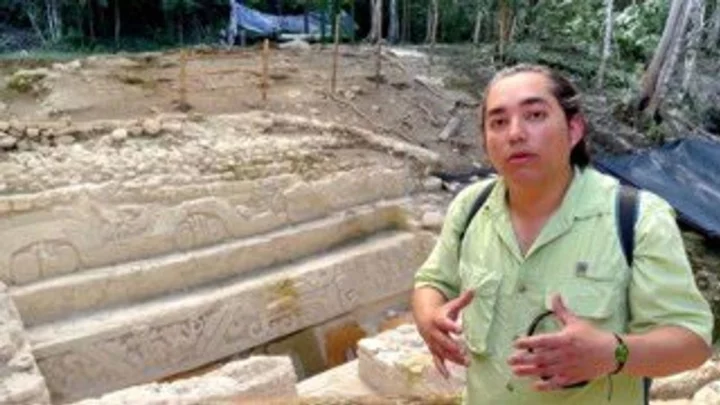
'Impossible' ancient Mayan city discovered in remote jungle
It feels like every day there’s a science story that comes along ready to blow our tiny minds, and today is no exception. A series of ancient interconnected cities have been discovered in the remote El Mirador jungle Guatemala, and it’s changing our entire understanding of the ancient civilisation. More than 400 settlements have been uncovered with some dating back as far as 1,000 BC. They’re linked by roads too, and it’s led them to be described as “the first freeway system in the world”. Sign up to our free Indy100 weekly newsletter Richard Hansen, a research professor at the University of Idaho, is an expert on the project and he’d called the findings a “game-changer”. It was previously thought that the Mayan peoples were nomadic, but these cities have changed the scientific community’s understanding. Speaking to the Washington Post, Hansen said: "We now know that the Preclassic period was one of extraordinary complexity and architectural sophistication, with some of the largest buildings in world history being constructed during this time.” On top of the 110 miles of interconnected roads, the discoveries also showed evidence of organised agriculture and even hydraulic systems. The findings are the result of work which first began in 2015, which saw lidar technology uncovered signs of ancient structures below the surface. Archaeologist Enrique Hernández, from San Carlos University said about the findings: “Now there are more than 900 [settlements]… We [couldn’t] see that before. It was impossible,” he said. Have your say in our news democracy. Click the upvote icon at the top of the page to help raise this article through the indy100 rankings.
1970-01-01 08:00
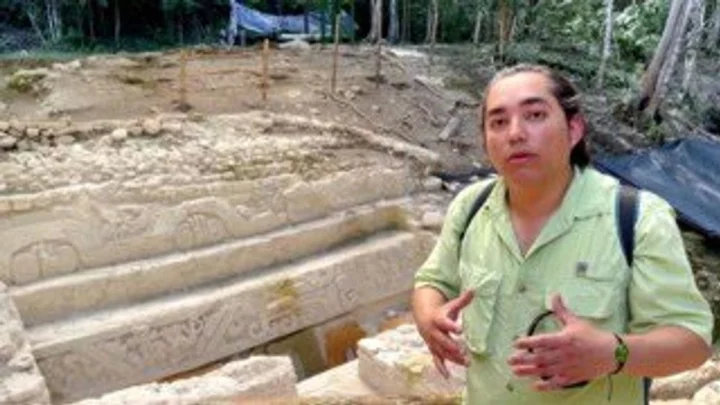
Ancient Mayan city discovered in remote jungle that was previously 'impossible' to find
It feels like every day there’s a science story that comes along ready to blow our tiny minds, and today is no exception. A series of ancient interconnected cities have been discovered in the remote El Mirador jungle Guatemala, and it’s changing our entire understanding of the ancient civilisation. More than 400 settlements have been uncovered with some dating back as far as 1,000 BC. They’re linked by roads too, and it’s led them to be described as “the first freeway system in the world”. Sign up to our free Indy100 weekly newsletter Richard Hansen, a research professor at the University of Idaho, is an expert on the project and he’d called the findings a “game-changer”. It was previously thought that the Mayan peoples were nomadic, but these cities have changed the scientific community’s understanding. Speaking to the Washington Post, Hansen said: "We now know that the Preclassic period was one of extraordinary complexity and architectural sophistication, with some of the largest buildings in world history being constructed during this time.” On top of the 110 miles of interconnected roads, the discoveries also showed evidence of organised agriculture and even hydraulic systems. The findings are the result of work which first began in 2015, which saw lidar technology uncovered signs of ancient structures below the surface. Archaeologist Enrique Hernández, from San Carlos University said about the findings: “Now there are more than 900 [settlements]… We [couldn’t] see that before. It was impossible,” he said. Have your say in our news democracy. Click the upvote icon at the top of the page to help raise this article through the indy100 rankings.
1970-01-01 08:00
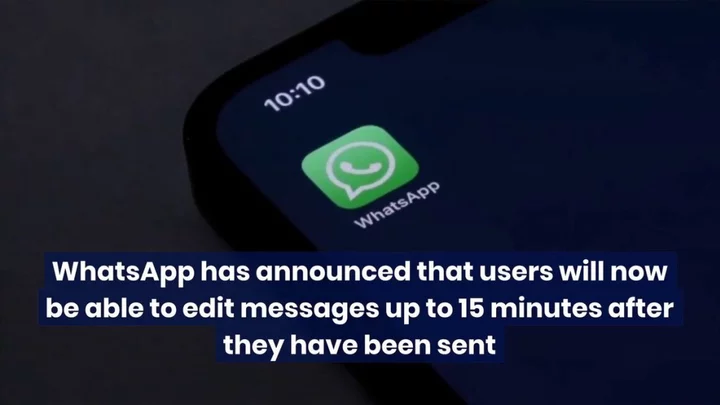
A major change is coming to WhatsApp
Big news for WhatsApp users who are a bit trigger happy when sending risky texts. You will now be able to edit your messages sent via the platform, within 15 minutes. "From correcting a simple misspelling to adding extra context to a message, we're excited to bring you more control over your chats," the messaging service said in a blog post on Monday. "All you need to do is long-press on a sent message and choose 'Edit' from the menu for up to fifteen minutes after," it added. Edited messages will be tagged as "edited", so recipients can see the message has been changed. Sign up to our free Indy100 weekly newsletter But they won't be able to see how the message has been edited. It comes after Twitter said it was giving its paying subscribers the ability to edit their tweets last year. Tweets can be edited a few times in the 30 minutes after posting. "Tweeting will feel more approachable and less stressful," Twitter said in a blog post at the time. "You should be able to participate in the conversation in a way that makes sense to you and we'll keep working on ways that make it feel effortless to do just that," the platform added. Have your say in our news democracy. Click the upvote icon at the top of the page to help raise this article through the indy100 rankings.
1970-01-01 08:00

Tech bro millionaire injects himself with son's blood in attempt to de-age himself
Bryan Johnson, the multimillionaire tech and science entrepreneur who is trying to reverse his biological age, has taken the next odd step in his attempt to achieve this. Johnson, who has already spent millions of dollars every year trying to turn back the clock, has now revealed that he’s injected himself with his teenage son’s blood. The multimillionaire recruited his 17-year-old son, Talmage, and his 70-year-old father, Richard, for a trigenerational blood transfusion. The family travelled to a clinic in Dallas, where Talmage and Richard gave a litre of their blood for it to be converted into a batch of plasma. Bryan then donated a litre of his blood to Richard. Sign up to our free Indy100 weekly newsletter Claims that plasma from younger bodies can benefit older people’s health have been around for a while. Previously there have been studies carried out on mice, however experts say the results are inconclusive. The FDA does not recommend the blood infusions Bryan has done. "We have not learned enough to suggest this is a viable human treatment for anything." said Charles Brenner, a biochemist at City of Hope National Medical Centre in Los Angeles. The 45-year-old has previously spoken about his lifestyle, and told the BBC that there have been improvements in different parts of his body. "my left ear is 64, my fitness tests say I’m 18, my heart is 37, my diaphragm strength is 18," he said. Bryan’s mission to reverse the ageing process has been titled ‘Project Blueprint,’ and involves following a strict diet, sleep, and exercise routine. Have your say in our news democracy. Click the upvote icon at the top of the page to help raise this article through the indy100 rankings.
1970-01-01 08:00
